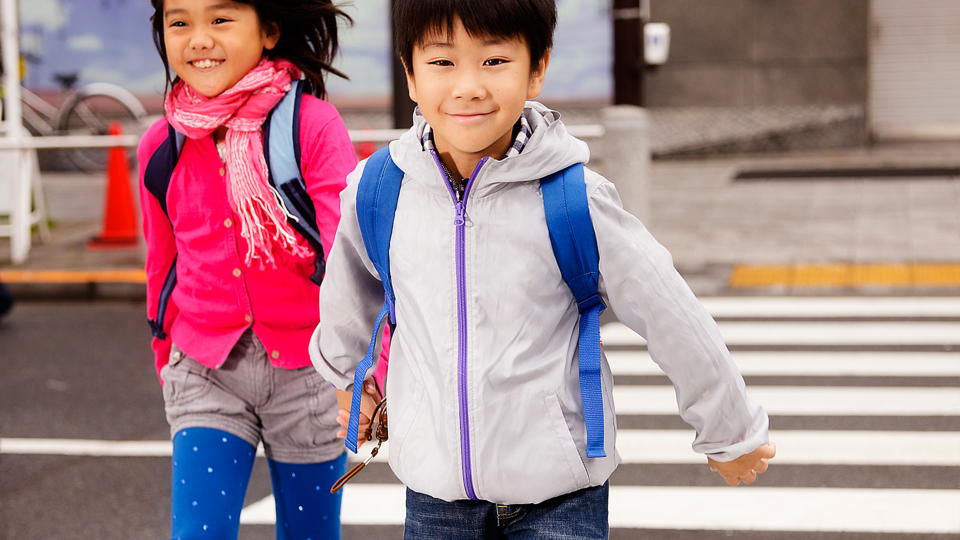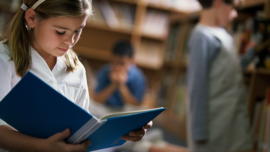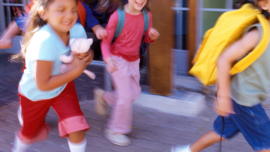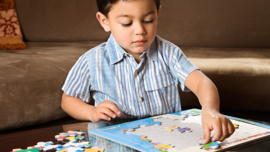First grade skills checklist

Is your child ready for first grade? See our checklist of essential developmental skills kids need to succeed.
Learning Stages
Is your child ready for first grade? This simple question can send otherwise rational adults into a tailspin. Although every child is special and unique and develops at their own pace, there are certain skills and knowledge sets that most educators and developmental experts agree are essential for social and academic growth, development, and achievement in school. As you look through the following checklist of essential developmental skills children need before they enter first grade, please keep in mind that young children need continued opportunities to attain any new skill; a “one-shot” approach to teaching is not sufficient for building a strong base of attitudes, aptitudes and abilities.
First grade readiness checklist
Social skills
- Shows confidence in self and demonstrates a sense of self-worth
- Follows rules and routines at home and in kindergarten
- Uses materials purposefully and respectfully
- Comfortably adapts to changes
- Shows eagerness and curiosity as a learner
- Sustains attention to a single task over a period of time
- Works, plays and shares with others
- Interacts easily with familiar adults
- Participates in group activities
- Respects the feelings and rights of others
- Uses words to resolve conflicts
- Seeks adult help when needed
Reading & comprehension
- Shows independent interest in reading-related activities
- Listens with interest to stories read aloud
- Retells a simple story
- Recognizes the association between spoken and written words
- Recognizes all the letters of the alphabet in order
- Distinguishes between and prints capital and lowercase letters
- Associates letters and sounds
- Distinguishes likenesses and differences of letter sounds in spoken words
- Recognizes rhymes and rhyming patterns
- Makes predictions about a story or passage based on the title and/or pictures
- Identifies words and constructs meaning from picture clues in text
- Identifies basic sight words
- Distinguishes fact from fiction
- Begins to understand basic characteristics of fables, stories and legends
- Identifies story elements of setting, plot, character and conflict (where, when, what, who and why)
- Uses personal perspective in responding to stories, such as relating to characters or situations
- Begins to understand simple punctuation marks (period, question mark, etc.)
- Locates the title, author name, illustrator name and table of contents
- Sorts common words into categories (e.g., food, colors, shapes)
Writing
- Reads and writes own name
- Tells a story using pictures
- Uses letters or shapes to depict words or ideas
- Writes familiar words
- Copies or writes words to convey messages
- Participates in group dictated stories
- Builds simple words and sentences
- Demonstrates left-to-right progression, and top-to-bottom progression
- Handles writing tools correctly
Language & listening skills
- Understands and follows simple directions
- Listens to others for short periods of time without interrupting
- Recites nursery rhymes, finger plays and songs
- Participates in discussions and conversations
- Asks questions
- Speaks clearly to convey messages and requests
- Distinguishes between asking and telling
- Distinguishes between formal and informal language (with peers, at home vs. at school)
- Uses complete sentences
- Composes oral stories
- Retells a simple story with basic elements of beginning, middle and end
Numbers, operations & problem solving skills
- Names numerals 0 through 30
- Writes numerals 0 through 20
- Uses counting skills to add to 10
- Classifies and compares objects
- Recognizes, duplicates and extends patterns and relationships of objects, symbols and shapes
- Collects data and makes records using lists or graphical representations
- Shows interest in solving mathematical problems
- Solves problems by guessing and checking using manipulatives or fingers
Geometry & measurement
- Becomes familiar with common instruments for measuring time and temperature (e.g., rulers, thermometers)
- Estimates and measures real quantities using non-standard units (blocks or paperclips)
- Understands and uses comparative words (long and short, heavy and light, etc.)
- Identifies, labels and creates a variety of shapes
Math in action: Telling time, counting money
- Shows an understanding of the calendar and time
- Knows the days of the week and months of the year
- Knows the value of a penny, nickel, dime and quarter
Social studies
- Understands the concept of history as real stories of other times, events, places and people
- Understands broad categories of time (past, present and future)
- Knows different methods of communication from long ago to present day (oral, pictographs, etc.)
- Understands the concept of historical contributions by historical figures
- Has a basic awareness of other cultures and cultural traditions
- Knows significant individuals in United States history
- Knows people and events honored in commemorative holidays
- Recognizes American symbols (the eagle, Liberty Bell, the flag, etc.)
- Recognizes that people use maps, globes and other models to identify and locate places
Science
- Forms conclusions based on comparisons, sense observations and exploration
- Knows that the Sun supplies heat and light energy to the Earth
- Recognizes basic patterns in weather
- Recognizes how people impact the Earth, including concepts of conservation, recycling and reducing pollution
- Understands that all living things have basic needs
- Distinguishes between living and non-living things
- Recognizes how living things change as they grow and mature
- Compares and describes the structural characteristics of plants and animals
- Distinguishes between types of environments and their inhabitants (hot, cold, wet, dry, etc.)












